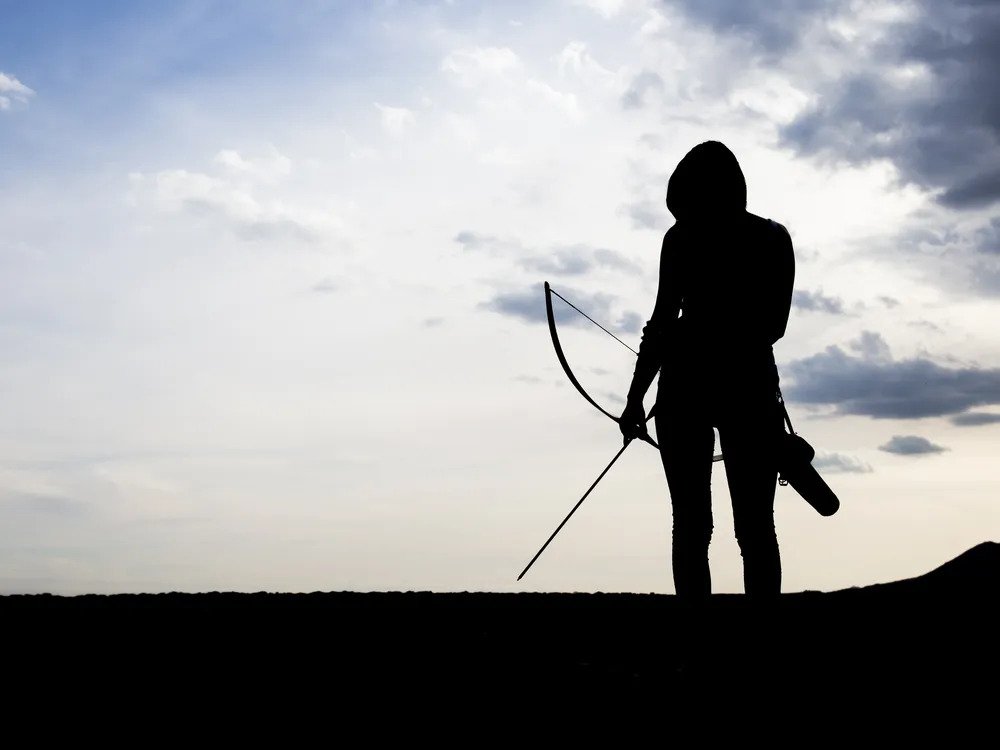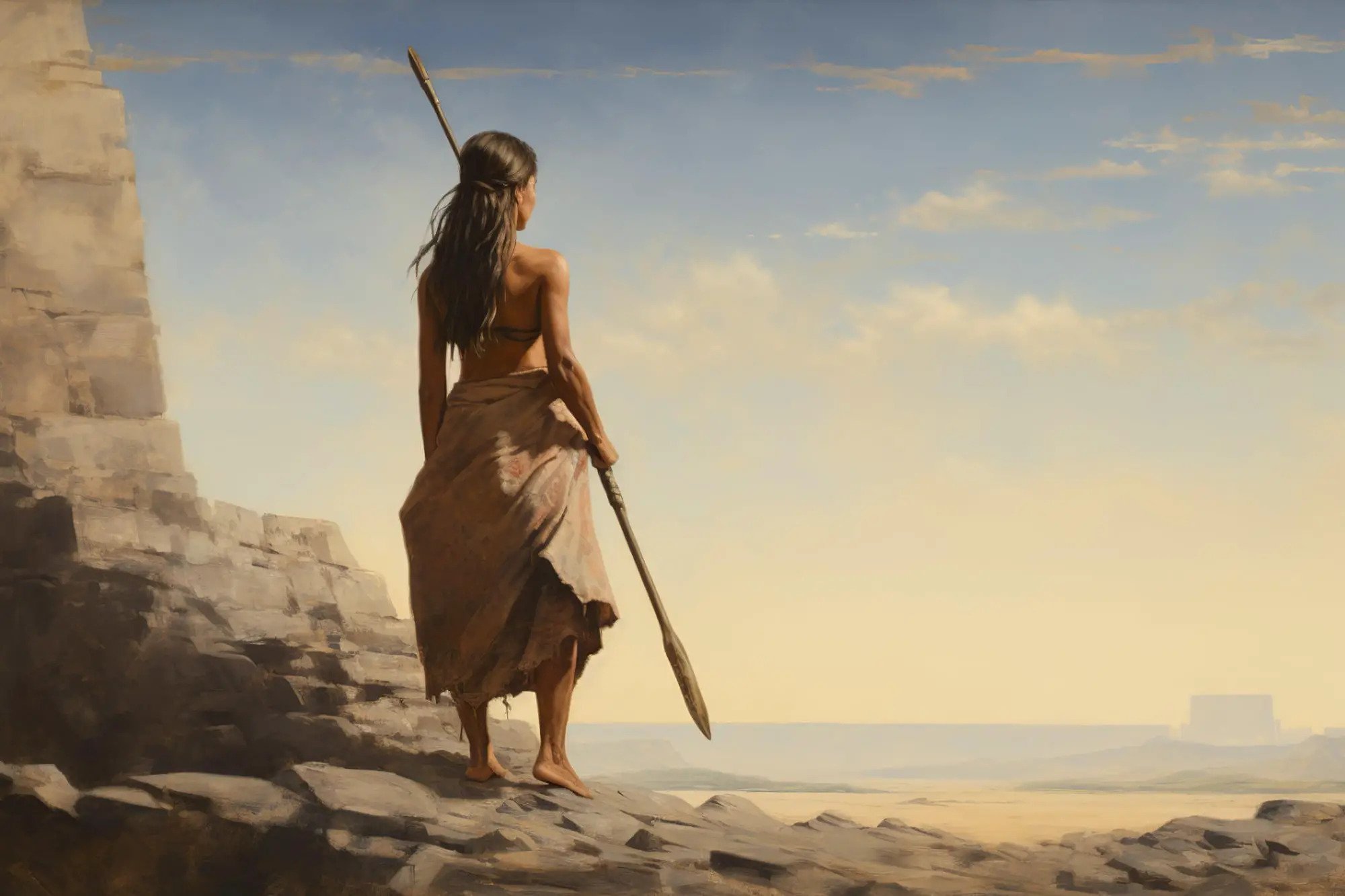Prehistoric Women Were Both Gatherers And Hunters
Prehistoric women were both gatherers and hunters, debunking a commonly heard narrative that suggests that in prehistoric times, men were hunters while women were gatherers. The reasoning behind this division of labor was that women's physical differences made them unsuitable for hunting, thus attributing the driving force behind human evolution to men.
Author:Karan EmeryReviewer:Daniel JamesOct 24, 202312K Shares160.4K Views

Prehistoric women were both gatherers and hunters, debunking a commonly heard narrative that suggests that in prehistoric times, men were hunters while women were gatherers. The reasoning behind this division of labor was that women's physical differences made them unsuitable for hunting, thus attributing the driving force behind human evolution to men.
Nevertheless, recent research by Sarah Lacy, an anthropology professor at the University of Delaware, which has been published in Scientific Americanand two papers in the journal American Anthropologist, challenges this traditional story.
Lacy and her colleague Cara Ocobock, hailing from the University of Notre Dame, conducted a comprehensive analysis of gender-based labor divisions during the Paleolithic era, spanning from approximately 2.5 million to 12,000 years ago. Their examination of existing archaeological evidence and literature yielded limited support for the notion that roles were distinctly designated for each sex. Also, their investigation into female physiology revealed not only women's physical suitability for hunting but also a lack of substantial evidence to suggest that they did not participate in hunting activities.
Addressing Archaeological Gender Bias
Lacy, a biological anthropologist specializing in early human health, and Ocobock, a physiologist drawing parallels between the modern era and the fossil record, joined forces after their shared frustration with the prevalent assumption in research. This assumption regarded a strong gendered division of labor among early humans, with males as hunters and females as gatherers. Questioning this default hypothesis, Lacy asked, "Why is that the default? We have so much evidence that that's not the case."
The researchers discovered instances of gender equality in ancient tools, dietary practices, artistic expressions, burial customs, and anatomical evidence.
“„People found things in the past and they just automatically gendered them male and didn't acknowledge the fact that everyone we found in the past has these markers, whether in their bones or in stone tools that are being placed in their burials. We can't really tell who made what, right? We can't say, 'Oh, only males flintknap,' because there's no signature left on the stone tool that tells us who made it. But from what evidence we do have, there appears to be almost no sex differences in roles.- Sarah Lacy
Physiological And Anatomical Evidence
The team also delved into the inquiry of whether anatomical and physiological disparities between men and women hindered women's ability to engage in hunting. Their findings indicated that while men held an advantage over women in tasks demanding speed and power, such as sprinting and throwing, women, in contrast, had the upper hand in activities demanding endurance, like running. Significantly, both of these skill sets were indispensable in the context of hunting during ancient times.
The team emphasized the significance of the hormone estrogen, which is more prevalent in women than in men, as a pivotal element in conferring this advantage. Estrogen's effects include enhancing fat metabolism, providing muscles with a more enduring energy source, and regulating muscle breakdown, preventing muscle fatigue. Researchers have traced the existence of estrogen receptors, proteins responsible for directing the hormone to specific locations in the body, back as far as 600 million years ago.
"When we take a deeper look at the anatomy and modern physiology and then actually look at the skeletal remains of ancient people, there's no difference in trauma patterns between males and females, because they're doing the same activities," Lacy said.
Understanding Paleolithic Societies
In the Paleolithic era, the majority of individuals resided in small communities. For Lacy, the notion that only a segment of the group engaged in hunting seemed illogical.
"You live in such a small society. You have to be really, really flexible," she said. "Everyone has to be able to pick up any role at any time. It just seems like the obvious thing, but people weren't taking it that way."
The Beginning Of The Gendered Theory
The concept of men as hunters and women as gatherers gained widespread attention in 1968 when anthropologists Richard B. Lee and Irven DeVore released "Man the Hunter." This publication compiled scholarly papers presented at a 1966 symposium.
In their work, the authors argued that hunting played a pivotal role in advancing human evolution by introducing meat into prehistoric diets, thereby aiding the development of larger brains compared to our primate relatives. Notably, the authors operated on the assumption that all hunters were male.
Lacy highlights the gender bias present in the earlier work of scholars as a primary factor in the widespread acceptance of this concept within academia. Over time, this notion permeated popular culture through television cartoons, feature films, museum displays, and educational textbooks. When female scholars conducted research that contradicted this narrative, their contributions were often disregarded or underestimated.
“„There were women who were publishing about this in the '70s, '80s, and '90s, but their work kept getting relegated to, 'Oh, that's a feminist critique or a feminist approach.' This was before any of the work on genetics and a lot of the work on physiology and the role of estrogen had come out. We wanted to both lift back up the arguments that they had already made and add to it all the new stuff.- Sarah Lacy
Reevaluating Gender Roles In Prehistoric Times
Lacy underscores that the "man the hunter" theory still exerts influence over the field. While recognizing the need for extensive research, particularly into the lives of prehistoric women, she aspires to see her perspective, emphasizing shared labor division between both genders, become the standard approach in future research.
Over a span of 3 million years, both males and females actively engaged in subsistence gathering for their communities, and the reliance on meat and hunting was a collective effort by both sexes, as Lacy contends.
"It's not something that only men did and that therefore male behavior drove evolution," she said. "What we take as de facto gender roles today are not inherent, do not characterize our ancestors. We were a very egalitarian species for millions of years in many ways."

Karan Emery
Author
Karan Emery, an accomplished researcher and leader in health sciences, biotechnology, and pharmaceuticals, brings over two decades of experience to the table. Holding a Ph.D. in Pharmaceutical Sciences from Stanford University, Karan's credentials underscore her authority in the field.
With a track record of groundbreaking research and numerous peer-reviewed publications in prestigious journals, Karan's expertise is widely recognized in the scientific community.
Her writing style is characterized by its clarity and meticulous attention to detail, making complex scientific concepts accessible to a broad audience. Apart from her professional endeavors, Karan enjoys cooking, learning about different cultures and languages, watching documentaries, and visiting historical landmarks.
Committed to advancing knowledge and improving health outcomes, Karan Emery continues to make significant contributions to the fields of health, biotechnology, and pharmaceuticals.

Daniel James
Reviewer
Daniel James is a distinguished gerontologist, author, and professional coach known for his expertise in health and aging.
With degrees from Georgia Tech and UCLA, including a diploma in gerontology from the University of Boston, Daniel brings over 15 years of experience to his work.
His credentials also include a Professional Coaching Certification, enhancing his credibility in personal development and well-being.
In his free time, Daniel is an avid runner and tennis player, passionate about fitness, wellness, and staying active.
His commitment to improving lives through health education and coaching reflects his passion and dedication in both professional and personal endeavors.
Latest Articles
Popular Articles
